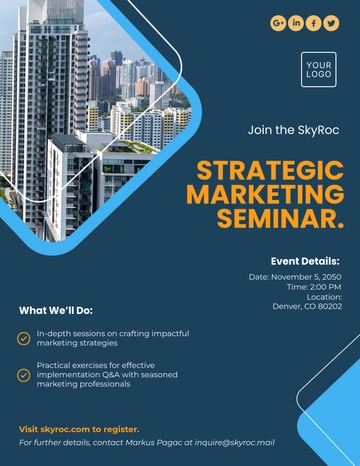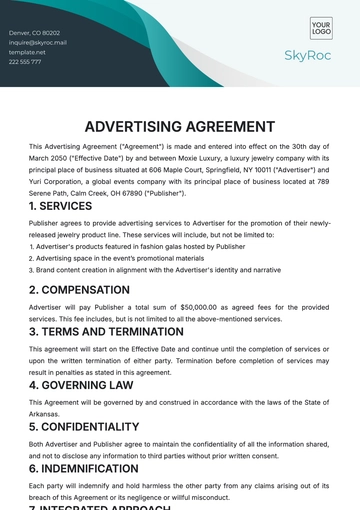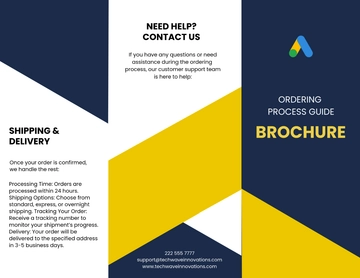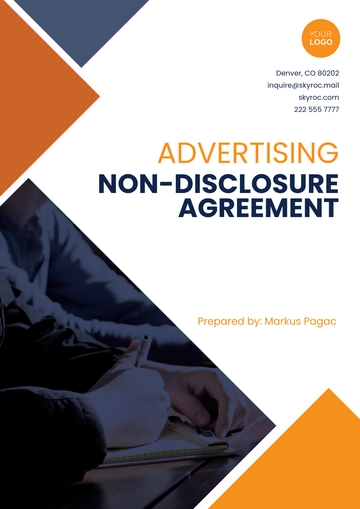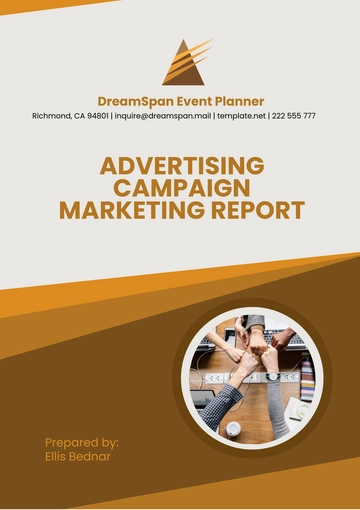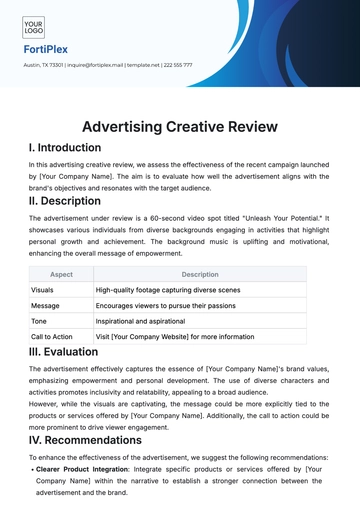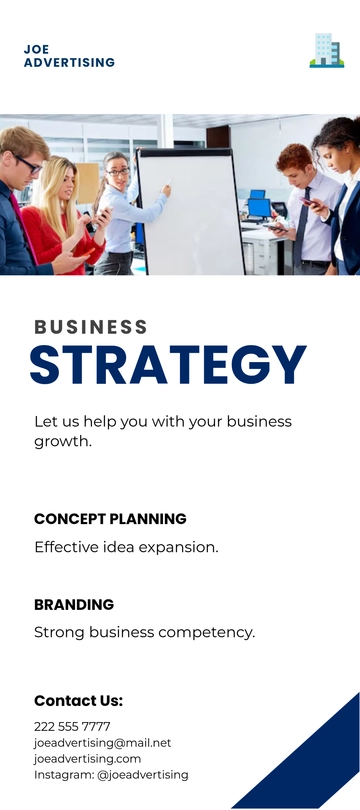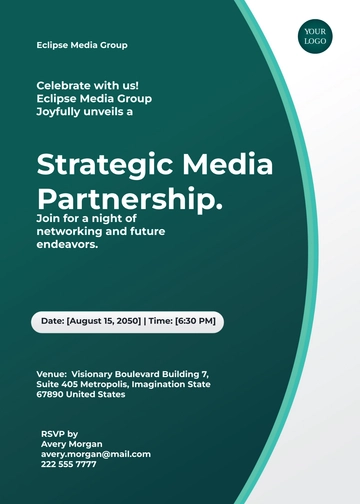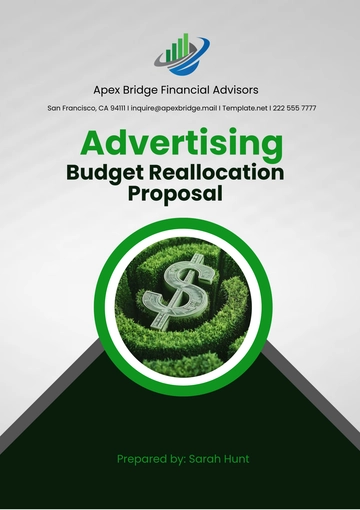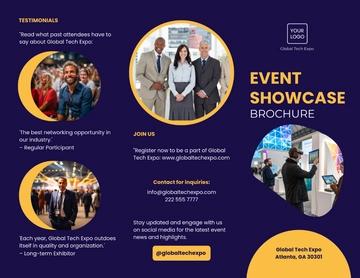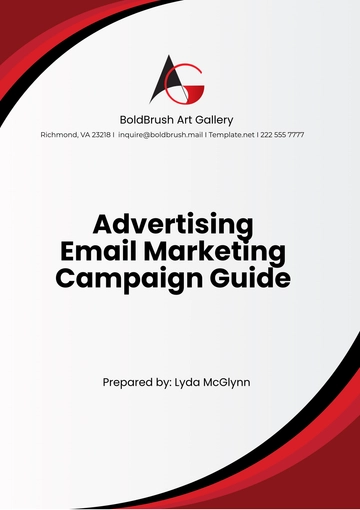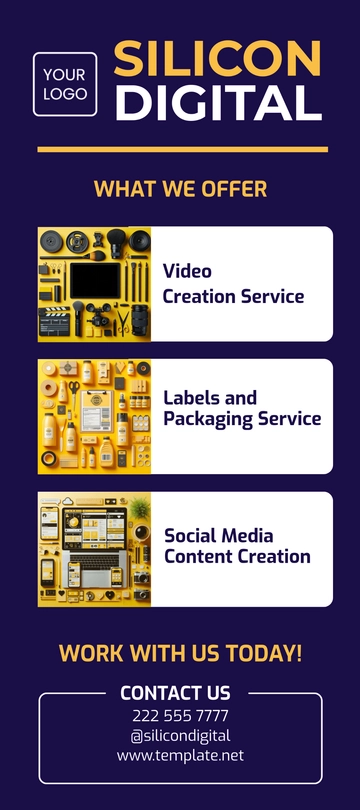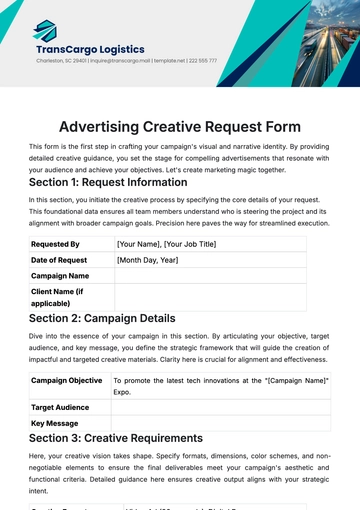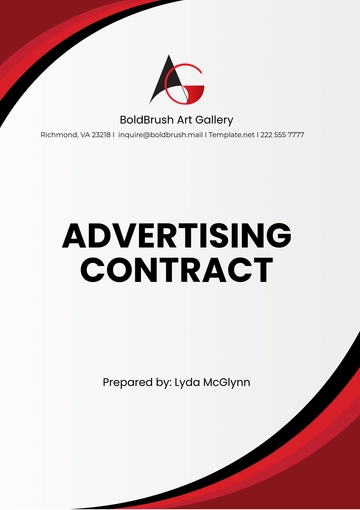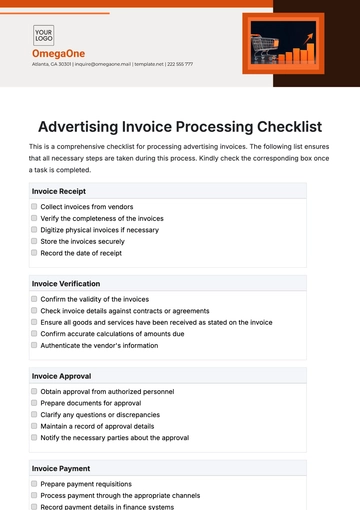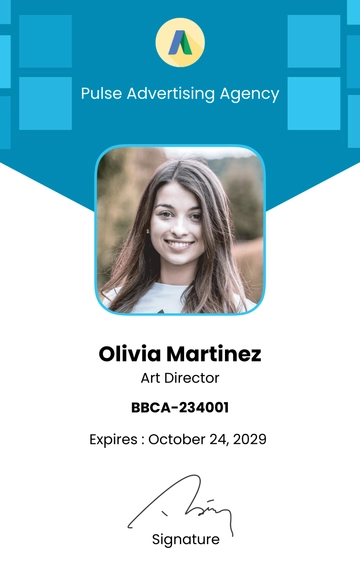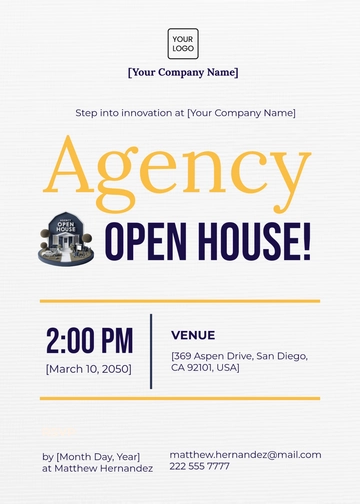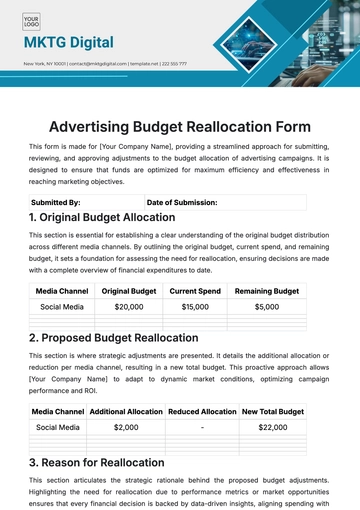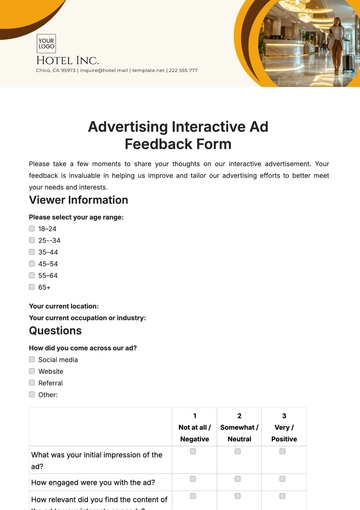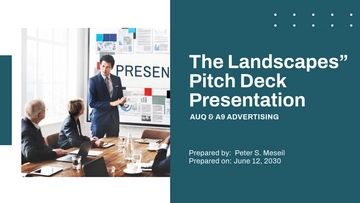Free Advertising Case Study

I. Introduction
[Your Company Name] has been a front-runner in the advertising industry, known for its innovative approach and cutting-edge technology integration. With a rich history of crafting compelling advertising campaigns, the company has built a reputation for pushing the boundaries of traditional advertising and embracing digital transformation.
II. Campaign Context
In 2050, [Your Company Name] embarked on a transformative advertising campaign for a leading consumer goods company. The campaign was aimed at not just increasing brand visibility but also at establishing a new benchmark in the realm of digital advertising. Leveraging the latest in AI, augmented reality, and data analytics, the campaign was designed to resonate with the evolving consumer landscape of the 2050s, characterized by tech-savvy consumers who value personalized and immersive experiences.
III. Objectives
These objectives were designed to achieve immediate campaign success and to establish a sustainable and evolving relationship between the brand and its consumers, setting new benchmarks in the advertising sector.
Maximize Brand Exposure: The primary goal was to dramatically elevate the brand's presence, not only on digital platforms but also through traditional media channels. The aim was to create a ubiquitous brand presence that resonates with a wide demographic, ensuring the brand becomes a household name.
Precision-Targeted Consumer Engagement: Leveraging advanced data analytics and consumer insights, the campaign aimed to deliver highly customized advertising experiences. This involved creating content that resonated with various consumer segments, ensuring that each advertisement spoke directly to the individual’s preferences, lifestyle, and purchasing habits.
Drive Sales Growth: A critical objective was to translate this enhanced brand visibility and targeted engagement into tangible sales results. The campaign sought to achieve a significant boost in sales figures, demonstrating a direct correlation between the innovative advertising strategies and consumer purchase behavior.
IV. Strategy
This multifaceted strategy, combining technological innovation with creative content and ethical messaging, was designed to engage consumers on multiple levels, fostering both immediate engagement and long-term brand loyalty.
AI-Driven Personalization and Predictive Modeling: The strategy involved deploying sophisticated AI algorithms capable of analyzing vast consumer data sets. This allowed for the prediction of consumer preferences and behaviors, enabling the creation of highly personalized advertising content. The AI models were constantly refined based on real-time data, ensuring that the advertising content remained relevant and engaging.
Interactive Augmented Reality (AR) Campaigns: To captivate the modern consumer, the company has incorporated AR technology into the advertisements. This allowed for the creation of immersive and interactive experiences, transforming passive viewers into active participants. The AR elements were designed to be both engaging and informative, providing a unique way for consumers to interact with the brand.
Omnichannel Marketing Approach: Recognizing the importance of a unified brand experience, the campaign was designed to be omnichannel, ensuring consistent messaging across digital platforms, social media, television, and print media. This approach was aimed to create a seamless consumer journey, from initial brand awareness to final purchase.
V. Execution
This meticulously planned and executed campaign demonstrated [Your Company Name]'s commitment to innovation, adaptability, and consumer-centric approaches in advertising.
A. Pre-Launch Research and Development
The execution began with an in-depth pre-launch phase, where [Your Company Name] conducted extensive market research, consumer behavior studies, and competitor analysis. This phase also involved developing the AI algorithms and AR experiences, ensuring they were tailored to the identified consumer profiles and market trends.
B. Multistage Campaign Roll-Out
The campaign was rolled out in stages, allowing for agile adjustments based on initial feedback and data. Early stages focused on digital platforms to quickly gauge consumer response, followed by a broader release across traditional media channels, including television and print.
C. Real-Time Data Monitoring and Adjustment
Utilizing advanced analytics tools, the team continuously monitored campaign performance across all channels. This real-time data allowed for immediate adjustments in content, strategy, and channel focus, ensuring maximum impact and efficiency.
D. Engagement and Interaction Enhancement
Throughout the campaign, interactive elements like AR experiences, social media contests, and influencer collaborations were introduced at strategic intervals. This maintained consumer interest and engagement, keeping the campaign fresh and dynamic.
E. Content Variation and Adaptation
The campaign featured a diverse array of content forms, from short-form videos for social media to immersive AR experiences for digital platforms. The content was regularly updated and adapted to reflect consumer preferences and current trends, ensuring ongoing relevance and engagement.
F. Sustainability Integration
In all phases of the campaign, the messaging and practices emphasized sustainability. This included using eco-friendly materials in physical advertisements and highlighting the brand's commitment to ethical practices in digital content.
G. Post-Launch Analysis and Learning Integration
Following the campaign, [Your Company Name] conducted a comprehensive post-launch analysis. This included evaluating KPIs, consumer feedback, and overall market impact. Insights gained were integrated into future strategies, ensuring continuous learning and improvement.
VI. Results
The campaign's success was highlighted by significant improvements across several key performance metrics. The results did not only demonstrate the campaign’s effectiveness in achieving its set objectives but also underscore [Your Company Name]'s ability to deliver measurable and impactful advertising solutions.
Metric | Pre-Campaign | Post-Campaign | Change Rate |
Brand Visibility (Impressions) | 500,000 | 1,200,000 | +140% |
Consumer Engagement (Clicks) | 50,000 | 120,000 | +140% |
Sales Increase | $1,000,000 | $2,500,000 | +150% |
Social Media Followers | 20,000 | 50,000 | +150% |
Social Media Engagement Rate | 2% | 4.5% | +125% |
Brand Visibility: The campaign dramatically increased the brand's visibility. The data illustrates the rise in impressions, indicating the campaign’s extensive reach.
Consumer Engagement: There was a remarkable increase in consumer interaction with the brand, as shown in the table above. This rise in clicks is a direct indicator of the campaign's effectiveness in engaging the target audience.
Sales Growth: The most significant indicator of the campaign's success was the substantial increase in sales. The table below displays the impressive growth in sales figures, highlighting the direct impact of the advertising campaign on revenue.
Social Media Metrics: The campaign's impact was also evident in the enhanced social media metrics, particularly in terms of followers and engagement rates. The table shows the growth in two key areas.
VII. Client Feedback and Market Perception
Post-campaign, a critical assessment of client feedback and market perception was conducted to gauge the broader impact and reception of the advertising campaign.
A. Client Feedback
The client, a prominent consumer goods company, provided extensive feedback. They praised [Your Company Name] for exceeding expectations in terms of creativity, technological integration, and overall campaign management. The client was particularly impressed with the significant uplift in sales and the enhanced brand image. They expressed their appreciation for the team's proactive approach to data-driven adjustments and their commitment to delivering a campaign that resonated with the target audience.
B. Market Perception
The impact of the campaign on the market's perception of the brand was profound. Consumer surveys and focus groups conducted after the campaign indicated a substantial improvement in brand awareness and perception. Customers reported a greater sense of connection with the brand, largely attributed to the personalized and interactive advertising strategies. The increase in positive brand perception and recall metrics is illustrated in the table below.
Metric | Pre-Campaign | Post-Campaign | Change Rate |
Brand Recall | 40% | 75% | +87.5% |
Positive Brand Perception | 45% | 80% | +77.8% |
VIII. Future Implications and Recommendations
Building on the success of the campaign, [Your Company Name] provided strategic recommendations for the client’s future advertising initiatives, focusing on sustaining and amplifying the achieved results.
Continued Innovation: The campaign's success highlighted the importance of embracing new technologies and trends in advertising. It's recommended that future campaigns continue to explore innovative solutions, particularly in immersive technologies and interactive digital experiences.
Data-Driven Strategies: The effective deployment of data analytics played a crucial role in the campaign's success. Future campaigns should continue to harness the power of data for more personalized and impactful advertising content.
Sustainable and Ethical Advertising: The positive market response to the campaign's focus on sustainability and ethical practices suggests that these elements should be integral to future campaigns. This approach not only aligns with contemporary consumer values but also enhances brand loyalty.
Long-Term Consumer Engagement: To build upon the established consumer base, it's essential to focus on long-term engagement strategies. This could involve ongoing interactive campaigns, continuous social media engagement, and the introduction of loyalty programs that reward long-term customers.
IX. Conclusion
[Your Company Name]'s innovative approach in advertising led to remarkable improvements in brand visibility, consumer engagement, and sales figures. The use of AI for personalization and AR for immersive experiences stood out as key contributors to the campaign's success. This case study demonstrates [Your Company Name]'s ability to effectively merge technology with creative advertising strategies to deliver tangible results for clients.
- 100% Customizable, free editor
- Access 1 Million+ Templates, photo’s & graphics
- Download or share as a template
- Click and replace photos, graphics, text, backgrounds
- Resize, crop, AI write & more
- Access advanced editor
Showcase your success stories with the Advertising Case Study Template from Template.net. This editable and customizable template allows you to detail the effectiveness of your advertising strategies in real-world scenarios. Perfectly editable in our AI Editor tool, it helps you document key insights and results. Ideal for agencies and marketers.
